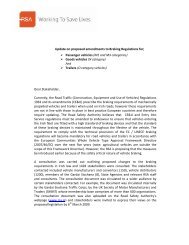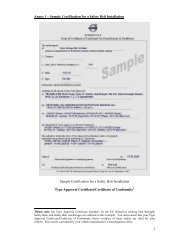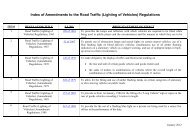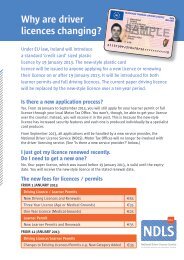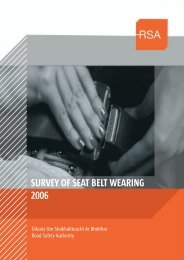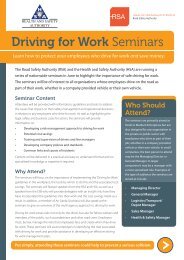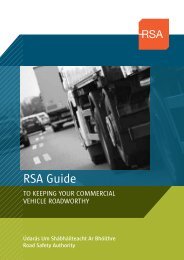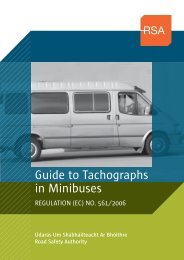National Motorcycle safety action plan - Road Safety Authority
National Motorcycle safety action plan - Road Safety Authority
National Motorcycle safety action plan - Road Safety Authority
You also want an ePaper? Increase the reach of your titles
YUMPU automatically turns print PDFs into web optimized ePapers that Google loves.
motorcycle crashes. Since there is, on average only 40 incidents annually, this<br />
information should be easily collectable..<br />
7.2.7 Statistical analysis of injuries suffered. The benefits of such future analyses can<br />
inform future policy in the context of car design, road design, the use of personal<br />
protective equipment and rider training. This could be performed in association with<br />
the HSE.<br />
7.2.8 The <strong>Motorcycle</strong> <strong>Safety</strong> Action Plan will support moves to improve casualty<br />
data collection to include information on the engine size of motorcycles<br />
involved in collisions<br />
Rider Performance<br />
7.2.9 It will be important to obtain accurate information on the number of riders who<br />
complete Initial Basic Training (IBT) and other driver training/ testing<br />
7.2.10 The Action Plan will seek to obtain accurate information on the number of<br />
riders who complete Initial Basic Training (IBT) and other driver training /<br />
testing<br />
7.3 Evaluation<br />
7.3.1 The Action Plan will also encourage Local Authorities to collate information on road<br />
lengths by road class, in order to calculate the relative collision rates and the<br />
effective identification, targeting and monitoring of links with above-average<br />
motorcyclist collision rates.<br />
7.3.2 The Action Plan will also encourage Local Authorities, through the preparation and<br />
publishing of annual <strong>Road</strong> <strong>Safety</strong> Plans, to undertake ‘before and after’ studies of<br />
schemes implemented, in order to build a local, data-led database for identifying the<br />
range of measures most likely to be effective in reducing motorcycle casualties and<br />
injuries within the Irish road environment.<br />
7.3.3 With regard to speed and alcohol-related collisions, the Action Plan will seek to<br />
improve the linking of details of these incidents to the collision records in order to<br />
improve analysis capabilities and ease of monitoring of the effectiveness of<br />
enforcement campaigns.<br />
7.3.4 The collision analysis indicated that the majority of motorcycle collisions occurred on<br />
two way single carriageway roads, but this is to be expected, as the majority of<br />
roads are likely to be in this category. However, the number of motorcycle fatalities<br />
on two-way single carriageways was increasing until a dramatic drop in 2006.<br />
7.3.5 The Action Plan will seek to undertake further analyses of this dramatic<br />
decrease using detailed collision data. The aim of these analyses would be to<br />
identify contributory factors and to sustain the decrease.<br />
7.4 Review and Further Consultation<br />
7.4.1 The <strong>Motorcycle</strong> <strong>Safety</strong> Action Plan is a working document, designed to adapt and<br />
change in response to feedback from ongoing work on the Action Plan, as well as<br />
from external influences such as new technological advances, the results of<br />
research and the implementation of new legislation.<br />
7.4.2 It is very important for there to be ongoing consultation on the <strong>Motorcycle</strong> <strong>Safety</strong><br />
Action Plan with rider groups, motoring organisations, motorcycle industry<br />
representatives, An Garda Síochána and other bodies. The Action Plan must be<br />
accepted by all stakeholders and for there to be shared ownership of it.<br />
22



